Culinary Mendacity Ends Here
Awl pal Tom Scocca has had enough of the lies about onion caramelization.
How Much More Do Comic Books Cost Today?
How Much More Do Comic Books Cost Today?
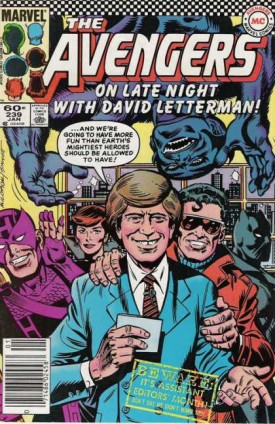
This is a big week for the comic book industry. On Friday (at midnight!), the first of the summer blockbusters, The Avengers, opens in the U.S. The Avengers is, of course, one of three superhero actioners to be released this summer, with The Dark Knight Rises and the reboot The Amazing Spider-Man on deck. Then on Saturday, it’s Free Comic Book Day, with free offerings from publishers, big and small, hopefully drawing in hordes of potential customers to stores. As comic book writer Fred Van Lente told me, “It’s a good annual promotion to get fresh faces in the stores. I was flown in to at an event at Acme Comics in Greensboro, NC, where several thousand people showed up.” And that would be a bang-up day for Acme, as, while comic-book heroes may be multiplying in Hollywood, the number of specialty comic book stores is dwindling.
We all have our memories of the first comic book we bought, whether we became what are popularly referred to (and no longer entirely pejoratively) as fanboys or not. And if the fanboy (or fangirl) bug bit, we also have the memories of that first subscription to have the comic books in your mailbox delivered monthly in a discreet brown paper wrapper, of that first trip to the comic book store, of that first time we were called a ‘fanboy,’ of that first time we realized that the fanboys were actually ruling the earth. Depending on your age, that first comic book was a handful of change, or a wadded up dollar bill or two. For me, I’m pretty sure my first was Brave and the Bold No. 121, a team-up of Batman and the Metal Men, purchased with a quarter given to me by my mom in a Charleston, West Virginia 7–11 in 1975. Coincidentally, adjusted to 2012 value, that quarter would be $1.07.
These days, if you decide to purchase a comic book, you will find that the prices of top-of-the-line books are $3.99. So that’s one book now for the four I’d have bought way back when. The question raised then, is why the steep hike in price? Are we looking at a huge spike in the cost of paper entertainment for little kids (and big kids) all over the country? And, if so, what the hell?
***
For our purposes here, let’s stick to what they call “singles” or “pamphlets,” which is the term of art for the comic book in pamphlet form, the one that you think of when you think of “comic book” (and the one our grandparents thought of when they thought of “funny book”). For the past few decades, the industry has been making large profits off of graphic novels, which are, in most instances, collected reprints of singles, and currently the companies are also finding ways to exploit content digitally, because that’s what companies do. The rule of thumb is that graphic novel collections cost a bit less than what you would’ve spent buying the singles, and the price point for the digital singles are about even with the paper singles (though some companies are offering digital singles with paper purchase for a small surcharge).
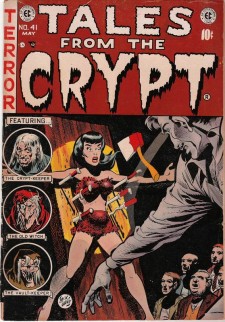
We will tell you that your basic superhero comics are largely divided by two major companies, DC and Marvel, and you will know that. In fact, you will know the roster of characters of each (DC: Supes, Bats, Wonder Woman, et al; Marvel: Spidey, Cap, Iron Man and the other Marvelous Jack Kirby creations), down to the respective provenances of minor characters like Man-Thing and Black Lightning. And of course there have been competing companies: Fawcett Comics sold as many (and more) books featuring their Superman-like character Captain Marvel (the Shazam! Captain Marvel, of course) in the 40s. EC Comics garnered national attention in the 50s, as its gruesome (and lavishly illustrated) line of horror and war comics were singled out by a Dr. Frederic Wertham’s cautionary Seduction of the Innocent: The Influence of Comic Books on Today’s Youth. In fact, as we will see later, this was not so much a minor controversy but a full-blown hysteria, stoked by Wertham’s book, devoting hundreds of pages to cataloguing instances of depravity (stabbing eyeballs! protruding nipples!) poisoning the minds of the children of the Greatest Generation, resulting in a Senate Subcommittee Investigation (on Juvenile Delinquency!). Charlton was a mildly successful company that published characters in the 60s that DC would later acquire, and which characters Alan Moore would reimagine into the post-modern masterpiece, The Watchmen. And in the 90s, a coterie of fanboy favorite artists (including Rob Liefeld, heh) formed an upstart company, Image, which is still publishing today, as are Dark Horse and IDW. But as DC and Marvel are the iconic publishers of note, and as no other publisher other than DC and Marvel has a market share that even approaches ten percent, it’s on Marvel and DC we will focus.
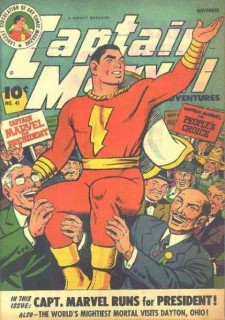
Of course, to be snarky we could now refer to DC and Marvel as Time Warner and Disney, and they are the respective owners (DC was purchased in 1969 by a company that later became Warner Communications, which later merged with Time Inc., etc., etc., and Marvel was bought by Disney not three years ago), but out of respect for tradition we’ll eschew metonymy and stick with the initial entities. Which of course, in the interest of trivia, were not the initial entities. Actually, the companies we think of as Marvel and DC are what remained after decades and decades of merger and acquisition, and it’s a small miracle that they are both here with us today. For example, the company that first published such bedrock DC characters as the Flash and Green Lantern and Hawkman was All American Comics, owned by Max Gaines (later of EC Comics and Mad Magazine). In fact, even the characters Superman and Batman initially had separate publishers. Basically, the fevered hotbed of imagination that was New York in the Golden Age1 during the greatest period of success for comic books (at least in terms of circulation), was a sloppy internecine soup of entrepreneurialism with new companies being formed/bought/discarded almost as afterthought.
The prices of comic books over time are not that hard to dig up. In fact, more recently, any decent fanboy could recite the price increases of the past decade from memory. Though comic books were published for well a decade before, we will start in 1938, as the debut of Superman in Action Comics No. 1 is considered the birth of the superhero comics as we know them. It goes (with exceptions2 of course) like this:
1938: 10¢
1962: 12¢
1969: 15¢
1971: 20¢
1974: 25¢
1976: 30¢
1977: 35¢
1979: 40¢
1980: 50¢
1982: 60¢
1985: 65¢
1986: 75¢
1988: $1.00
1992: $1.25
1995: $1.50
1996: $1.95
1997: $1.99
2000: $2.25
2005: $2.50
2006: $2.99
2009: $3.99
As mentioned previously, there are books from the Majors (as Marvel and DC are referred collectively) selling for $2.99, but the Iron Man and Avengers titles, and DC’s Action Comics and Justice League, they’re going for $3.99.
Now let’s just adjust those numbers for inflation, and, considering that the price held tight at ten cents for nearly 25 years, add in some dates in the 40s and 50s:
1938: $1.63
1943: $1.33
1948: $.95
1953: $.95
1958: $.86
1962: $.91
1969: $.94
1971: $1.13
1974: $.1.16
1976: $1.21
1977: $1.32
1979: $1.26
1980:: $1.39
1982: $1.43
1985: $1.39
1986: $1.57
1988: $1.94
1992: $2.04
1995: $2.26
1996: $2.85
1997: $2.94
2000: $3.00
2005: $2.94
2006: $3.40
2009: $4.27
2012: $3.99
That’s a pretty unambiguous progression right there: comic books are indeed getting more expensive. Up until the advent of the 70s, the price of a comic book was pretty much pegged to one dollar, give or take, and then began to slowly creep up, passing two dollars in the 90s and hitting the four dollar mark around the time Obama was elected. That’s an increase from one dollar to four, or 400%, and remember that this increase that didn’t really start to kick until until after I was reading about the Metal Men saving Batman from being tied to a train (and developing an early appreciation of Jim Aparo). The spike is a relatively recent one.
***
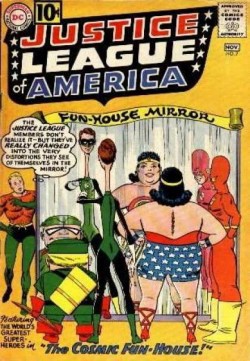
For insight on why this ballooning inflation happened I turned to comic book professional Fred Van Lente, who was nice enough to chat with me. Van Lente co-created Cowboys Vs Aliens and has written the wildly successful Marvel Zombies and The Incredible Hercules. But aside from that, he wrote (and Ryan Dunleavy illustrated) the soon-to-be released The Comic Book History of Comics, collecting (and updating) their mini-series Comic Book Comics, which is just what it sounds like: the history of the comic book industry in sequential art form. (And if any of this is remotely interesting to you, I heartily recommend the book.)
According to Van Lente, one factor affecting the rising price of comics is the steady decline of the audience. “For me it’s the starkest example of how comics when they were first conceived were completely different then than they are now. Comics were originally priced cheap not only so kids could get them, but because you made your money in bulk.” Oft-cited estimates of the Market Research Company of America show that, in 1945, roughly half of all Americans read comic books, including 95% of all boys, and (and!) 91% of all girls, between the ages of six and eleven. “In 1947,” Van Lente added, “one out of every three periodicals sold in the United States was a comic book. That’s 180 million comics in one year.” To experience market penetration like that, you’d pretty much have to be the Internet. And if you glance at these lists of circulation figures for the time, you see that by 1946 you have four different comic book titles that were selling more than a million copies per month. (Whereas now, there are only three titles clearing (barely) two hundred thousand copies monthly.) So in comparing the 40s with now, we’re comparing a time when comic books were hands-down no-joke the undisputed dominant paradigm of entertainment for American children to now, a time when the characters and storylines of comics constitute a very American mythology while the vehicles that brought them there, the comic books themselves, sit off to the side. They are, after all, just one medium of a bucket-full lined up to entertain the kids these days. So basically, the market contracts, and to make up for lost volume, prices are raised. It happens all the time.
I asked Van Lente how this came about. “Basically, Frederic Wertham and television killed comics as a mass medium in the United States. In that, in the 1950s the hullaballoo around the Senate hearings and the criticism that comics were bad for kids and caused juvenile delinquency caused a real self-immolation of comics,” he said. By the 50s, the appetite for superhero comics was dwindling, while adult-themed comics, aimed at the generation that was raised by Superman and Captain Marvel and know full-grown adults, were flying off the shelves. “Any publisher who was producing non-kids fare was run out of business.” And it was that turbulent time that knee-capped comic books, and even with resurgences in the 60s (with the self-awareness of Spider-man and the Hulk, and the trippyness of the Fantastic Four and the Legion of Super-Heroes) and then the 90s (awash in a cascade of X-Men books and spin-offs), comics never regained their ubiquity in the United States, a ubiquity still enjoyed in Japan and France to this day.
But there’s another factor that Van Lente thinks is a proximate cause: the so-called direct market. For the first 40 years or so of the comic book industry, comics were just a periodical like any other, and distributed to newsstands (remember them?) and spinner racks in dime stores along with all the other magazines. And the way that periodical distribution worked is that, when the next issue of a magazine arrives, the unsold copies (or at least portions of the covers thereof, to demonstrate unsold-ness) were returned to the distributor for credit. It’s similar to how book distribution works, but it was a bit shadier, as distributors would battle over territories, and as the average newsstand magazine was not necessarily as irreplaceable a product as a bestselling novel. And comic books were the most second-class of the already second-class citizenry of periodicals, resulting in spotty and late distribution of titles based on the whims of the distributors.
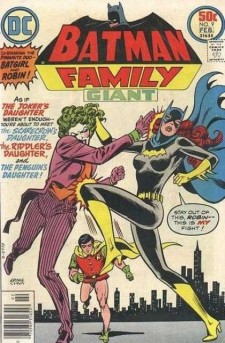
By the 1970s, fandom as we know it was developing — starting newsletters, trading with and talking to fellow fans, taking the first steps from the primordial sea of readership into the genus of fanboy-fangirl — and some fans realized that in order to ensure that they would be able to get specific issues of a title in a timely manner, they would need to take matters into their own hands. So they set up a competing distribution model, ultimately resulting in the modern comic book shop. They began dealing with publishers directly, offering to do away with returns in exchange for a bigger wholesale discount than the newsstands got. Then they would sell these books through comic book stores, just beginning to pop up, and keep the unsold copies as backstock for the collector’s market. Hence, the Direct Market. (Notable pioneers in this endeavor include Phil Seuling, the father of the direct market, Bud Plant and Steve Geppi.) Van Lente covers this shift in The Comic Book History of Comics, excerpted here with permission, writing: “The Direct Market would grow by double digits every year for the next two decades.”
It sounds good, right? Comic book stores as we know them today were born, as was the ability to ensure that you could buy a specific book the day it was released. But it had two ultimately devastating side effects. First, it eroded newsstand distribution of comics to a bare footnote, which means that an ever-decreasing portion of fanboy-fangirl generations get their first tastes from the spinner rack. Which barely matters, because the success of the Direct Market painted itself into a corner, as the market for comic books became more and more of a highly specialized niche. Said Van Lente, “If you have a shrinking pool of consumers, doing the R and D to expand that audience is expensive and risky. If you can’t get five people to buy one book, you get one person to buy five books.” And now since even the dominant distribution model is inadvertently engineering to choke growth of the market, publishers keep raising price points a) in order to make up for shrinking numbers, and b) because the very specialized market will bear it.
As previously noted by Van Lente, the comic book industry of today is nothing like what it used to be.
***
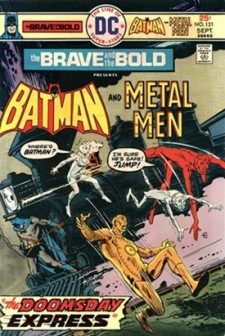
Okay then, maybe the skyrocketing price points of comic books are not solely the result of the greed of the publishers, but rather the result of an evolving industry, one in distribution models combined with decreasing demand have resulted in a product that can’t be sold for less. What of the future? I personally am pretty fond of the comic books, and I’d hate to see them go.
I reached out to Jimmy Aquino, host of the popular podcast Comic News Insider (already up to its 400th episode). “I fear if prices continue to get higher, then it will only hurt the industry. I’ve heard so many people say they have had to become more picky/choosy when it comes to comics since the prices have increased. Unfortunately, lack of sales will increase prices and increased prices will cause lack of sales,” Jimmy said via email. True, if a young/old fan has a certain budget for the comic books, and the comic books are four times more expensive than they were when fan’s grandfather was a child, then it will have to result in fewer books bought.
I also spoke to Wayne Quackenbush, the very charming proprietor of Annex! Comics in Newport, Rhode Island, one of the kinds of shops that is investing heavily in engaging with customers, offering not just items for sale but classes on sequential art and immersive 12-hour draw-ins (and also the last brick-and-mortar video rental store in Rhode Island, says Quackenbush — think about that for one second). One of his customers has described Annex! Comics as, “An oasis of culture in a sea of mediocrity,” which is an apt description of your finer comic book store as you’ll find, mixed metaphor notwithstanding. And of course while comic book stores vend a great many items — back issues, statuettes, games and other accoutrements of nerd culture — the new books, on sale each Wednesday or Thursday (depending where in the country you are). I asked him how’s business, and he answered, “Business is terrible, but that’s not because of comic books, but because of the Not-so-Great Depression and being in Rhode Island.” But business has been stable since Quackenbush took over the store in 1998.
But what of the threat of digital publishing (which is by no means unique to comic books)? “I know that the Majors are working towards getting rid of pamphlets that they sell, that they’re going to try to be all digital as soon as possible, because that cuts out the middleman — namely me,” said Quackenbush. But if you talk to older fans, you do hear a reticence to accept this digital future. Some of the appeal of the comic book (maybe nostalgic, or soon to be) is the tactile. “I am still one of those who enjoy the visceral feel of a comic as opposed to reading digital,” says Aquino. As Quackenbush put it, “I’ve never met anyone that would prefer to read a digital comic book.” And of course there is the comics collecting industry. Go into Annex! Comics, or your own personal comics store, and you will see boxes and boxes of old comics, artifacts for sale at sometimes quite the premium, depending on age and significance. If comics move to an all-digital future, there won’t be a market for rare and immaculately preserved digital books, as the digital nature of the product obviates both of those qualities.
And digital publication is not the only threat to the future of comic books. There are concerns that the Majors will someday abandon pamphlets completely in favor of graphic novels, or other books published in trade paperback format. “There’s talk that the 32 page flimsy, floppy pamphlet may be going away,” said Quackenbush. And Aquino wrote, “I think singles will be a thing of the past as many companies are already leaning towards just developing original graphic novels or are just making mini-series of 4–6 single issues with the goal to collect them into a trade for profit.”
***
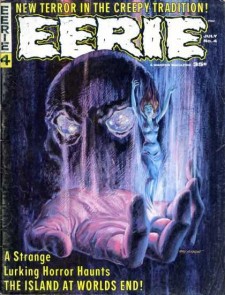
For the record, the first comic book bought by Van Lente was Incredible Hulk No. 265, for fifty cents from a spinner rack. For Quackenbush it was Eerie No. 4 in 1964 (actually more a magazine than a single, but still) for thirty-five cents (which he saved up for two weeks), and Aquino’s first was a Richie Rich digest (again, not a single) for fifty cents in 1975 from the local Pic N’ Save.
“I learned how to read from comic books,” adds Quackenbush, “It’s a great way for parents to get their kids to read.” That’s a huge point. Comics obviously occupy solid ground in American culture, and this summer’s box office receipts are only one aspect of this solid position. The video games, the TV shows, the ancillary products — comics are certainly going nowhere. But what might be going somewhere soon is the actual comic book itself. And the utility of comic books, no matter what Dr. Frederic Wertham thought a half-century ago, is partly that you’re putting something in the hands of the youngsters that makes them want to read. I also learned how to read from comics, and how to think visually, and just how to enjoy stories, which has fueled me throughout my life.
The singles, the pamphlets, may be destined for the dustbin of history (or a purely digital future?), but it’s not merely nostalgia that makes me argue that that would be a very sad thing.
1 When we refer to the “Golden Age,” that would be the period from 1938 until the Werthamite Inquisition in the 50s, the most prosperous period in comic book history. The “Silver Age” runs from 1956, when DC rebooted the character of the Flash, and spans the Pop-Art success of Marvel Comics and the Batman television show. The “Bronze Age” covers from 1970 to the mid-80s, during which comic books flirted with grown-up themes (and the industry largely flagged). The “Modern Age” is used to describe from ’85 until now, but hopefully someone will think of a more colorful appellation.
2 While the price point of the singles are uniform as a function of time, the majors did publish books that deviated. DC’s Eighty Page Giants were popular in the 60s and early 70s, packaging eighty pages of reprint material in a single for about twice the price of a single, and later in the 70s they published certain titles (such as Batman Family and World’s Finest) as Dollar Comics, which offered 48 ad-free pages. At roughly the same time Marvel sold these mind-bending 10” by 13” reprint books called Marvel Treasury Editions, which were just over-sized enough to make a little kid feel like he or she make actually fall into the comic book (which is pretty much the point of the exercise). And as fandom exploded in the 80s, the majors would introduce new formats, such as books with glossier paper and better quality printing, or content for mature audiences, which would be sold at a modest premium, as was a premium added to some books available exclusively through the Direct Market.
And we’d be doing a disservice to not at least mention the independent publishers, which we excluded as their prices do not necessary fall in lockstep with the Big Two, and hence throw the numbers all over the place. Take, for example, Cerebus. When Dave Sim launched his iconic independent series in 1977, the cover price was one dollar. Meanwhile, were you to grab a copy of Marvel Two-in-One (a team up book featuring Fantastic Four’s the Thing, oddly), say No. 29, wherein he teams with the Master of Kung Fu, the cover price was thirty cents, as were all the other books from the Big Two. Sim did not have the benefit of the guarantee of tens of thousands of copies sold. For the venture to be viable for Sim, he had to charge enough so that if he sold a couple thousand copies, he would have enough left over after expenses to pay the rent. Sim was of course not the only writer/artist going it alone at the time — Richard and Wendy Pini’s WaRP Graphics experienced success with their own Elfquest and Colleen Doran’s A Distant Soil, and, later, Kevin Eastman’s and Peter Laird’s Teenage Mutant Ninja Turtles went on to be its own cottage industry, and of course before that there were a plethora of underground “comix” that were published in the late 60’s and onward, featuring such talents as R. Crumb and Gilbert Sheldon. By the way, those prices converted to current value would be $3.70 for Cerebus, and $1.14 for Marvel Two-in-One. The Indies don’t necessarily work for the purposes of this piece, but we should always support them in any event.
Previously What It Cost Eight Women Writers To Make It In New York
Start Getting Used To The Idea Of Being Encased In Silkworm Cocoons
“Vollrath says there are potential applications for the cocoons themselves, particularly in the developing world and potentially in car panels that are very tough and totally sustainable. The researchers are working on carbon footprint calculations but Vollrath notes that the production process is probably carbon neutral, involving a mulberry bush and worms that, unlike cattle, don’t emit any methane. Further research is needed. Porter said the next stage will be to find a way to replicate the structures found in the cocoons or use them as a base material impregnated with gels as a way of developing a scalable production process.”
— In the future, cars will be made out of silkworm cocoons. Also, probably, the human-size webs that The Machines keep us in while they harvest our bone marrow.
Crab Big
Here you will find a picture of Claude, a 15-pound Tasmanian giant crab that the Sea Life center in Dorset, England just bought for $4,800. Claude is 15 inches across, and is expected to grow to double his current weight. That’s a big crab.
Know Your Internet History! A Chat With Cockeyed's Rob Cockerham
by Mark Allen
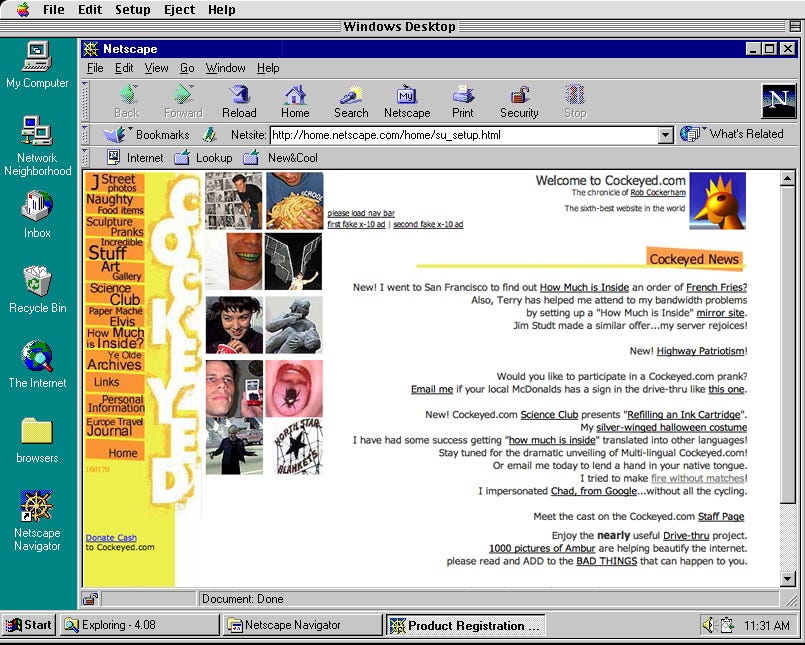
The pre-2000 World Wide Web was like the Wild, Wild West. There were no blog or social media templates providing touch-screen-ease for kids with smart phones and 4,999 friends. As the early American settlers built their cabins with logs and mud, so early website builders crafted their websites out of raw HTML. Flash, frames and Java were the blood, sweat and tears of these pioneers, who established outposts like the first-ever website and the first true internet meme before bravely going on to fight the first troll wars. Who were these early heroes of the internet? Who ventured into the “Internet Help” section of bookstores in 1996 seeking titles like HTML For Dummies? Who purchased server space by-the-month over the phone from some guy in a building in Florida they would never meet? Who lost years of their lives fretting over the “Slashdot effect” or page visit counters?
In this series we’ll be talking to the people who created these now-landmark websites. Up first: Rob Cockerham, whose website Cockeyed has been chronicling ambitious public pranks and scientific product experimentation since 1997.
Website: Cockeyed
Creator: Rob Cockerham
Date created: 1997
Wayback Machine earliest archive: February 29th, 2000
Internet history relevance: pranks, product advice as consumer culture commentary, science experiments as entertainment, humorous digital photographs with text as a storytelling medium
Mark Allen: You were one of the first people on the internet to do what you do. What were your pre/non-internet inspirations?
Rob Cockerham: The first thing that comes to my mind was watching “MASH” reruns. I’d have to say that was a fundamental comic inspiration. For my drive to examine everyday life with a scientific slant, I attribute that to my dad. He is retired now, but he was a forensic scientist for the state crime lab in Sacramento. He also had 1,000 hobbies, such as making glaze for pottery, plant breeding and grafting, local politics, sculpture, wine making… a taste of everything that had a learning curve. He is a great teacher, and one of the lessons which I held onto was that you should keep good notes. I keep good notes, and I honestly think it’s better to keep good notes than it is to rigorously apply the scientific method.
You seem to have a love for information, statistics and pranks… often combined. Thinking back, did you have any ideas about doing these things publicly before the internet came along?
Oh, yeah, but I was a bit too shy actually. I made a couple of movies with friends, a comic with my brother. I thought about starting a puppet show. Now that I think about it, a puppet show would have been a great way to perform without showing my face. Also, at UCSB, I made a seven-part series of informational fliers for bus stops, titled “Information for People Who Are Waiting,” with subjects such as “Millard Fillmore, our 13th president.”

Do you remember the moment you thought, “Eureka! I should make my own webpage!”
Sure. I was working in a call center doing internet tech support for MCI internet. Everyone I worked with sat in front of a computer, but we didn’t need them for work because we’d all memorized the windows internet setting pages. All day we sat and browsed the web. Most of us were learning HTML, creating web pages at night and then coming in to show them off to our co-workers. But I had an advantage! I had a scanner. My web pages featured original images, not just reworked stuff I’d found online already. I think my very first webpage was one built from scanned images of eight different types of razor blades. I didn’t actually scan images, I just put the blades into the scanner and scanned them. Of course, this was posted in Geocities originally.
Where/how did you learn to build with raw HTML?
I had a circle of friends who frequented Tower Books. One of them went through a shoplifting phase where he stole one book per day every day for… uh, ever. He actually took requests from us, so I asked for a giant HTML teaching/reference guide. That’s right. A paper book. Combined with the eager audience at work, I was pretty motivated to make a mountain of goofy stuff to share online.

You were initially linked to by a lot of places like Slashdot, BoingBoing and MetaFilter. What else kept you going when there was nothing like you on the internet?
Email! I got so much email. It would take an hour a day just to read it. Actually, about an hour a day to delete spam and read the actual human correspondence.
Your “Terrace Cafe sculpture replacement” prank, in which you kept substituting different icons into a sign at a mall food plaza, reads like a wacky 90s sitcom sub-plot. I also love your ongoing quest to create “hot air soap bubbles,” and your “spring shoes” story, where through trial and error you finally constructed wearable spring-soled shoes like Wile E. Coyote used in the Warner Bros. cartoons. These are gripping sagas! At what point did you decide to use chronological photographs, in HTML “frames” with text, to tell a story?
After about three weeks of adding photos with a scanner, I splurged and bought a tiny panasonic digital camera for $500. It ran on AA batteries, had a detachable flash and its maximum resolution was one mexapixel. That was the best thing ever. Carrying it around in those days, people would stop me on the street, not because it was a small camera, but because it had a postage-stamp sized LCD screen that was pretty bright. No one had glowing rectangles in 1998. Just me. Also, it was many people’s first encounter with “You can just take a picture and immediately see it!” I had a ton of free time, smart, willing friends and an instant audience of thousands. After documenting a few normal things, I started to document abnormal things. The chronological set of photographs seemed like the best way to showcase almost any adventure. Cockeyed.com was the perfect excuse to try any project. Also, once I had the camera, the adventures were nearly free. It was (and remains) a low-priced hobby.
Some of your old pranks are still ingenious by today’s standards. Your T.G.I.Friday’s menu prank — where you created and distributed an alternate, very funny version of the restaurant’s Atkins-menu page (Bunless Burgers: “Specially flavored to taste like hot dogs”) — is a sick classic. It was almost an early concept of the “flash mob.” What are some of the things you feel would have been easier with your site today that you couldn’t do in the late 90’s/early 00’s?
Unfortunately I can’t address that question, because I’m still stuck in 2005. Organizing things was always possible on the web, but today I can enlist helpers that also have cameras, for a nationwide prank, for example. I can post stuff directly from my phone, but I rarely do, because I always add a story, and I’m more comfortable editing text on a full size keyboard. Selling advertising is definitely easier. Finding images online has improved a ton. There was a time when the only images more than 300 pixels wide were x-rated.
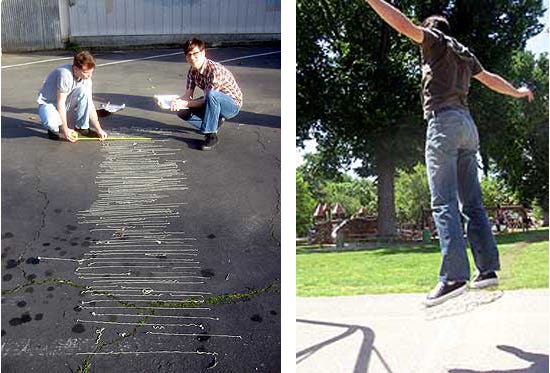
Why was your Costco Sign prank page taken down?
Costco didn’t think it was funny that I had a team of people put signs in a bunch of stores for non-existent products such as “Frozen Supermodel 3 lbs. bag,” “Party Chow” and “Personal Irrigation Kit.” I made two critical errors in judgement: #1 I paid for a Costco membership and #2 I put my actual phone number on the application.
Your influence certainly seems to be all over the web these days, with endless YouTube videos of people putting Mentos candy in Diet Coke bottles and whatnot. What do you think of today’s internet?
There is a lot of noise being produced, junk that doesn’t have any real body to it. But not everybody is brain-locked onto it. The good stuff (paradoxically called “heavy”) will usually rise to the top.

Mark Allen is a writer and performer living in New York. He has been on the internet way too long.
Poet Awarded
Congratulations to Heather Christle, whose The Trees The Trees has won the second annual Believer poetry award. Three of Chirstle’s poems appeared here back in September.
Meet Your New Food Magazine, "Graze"
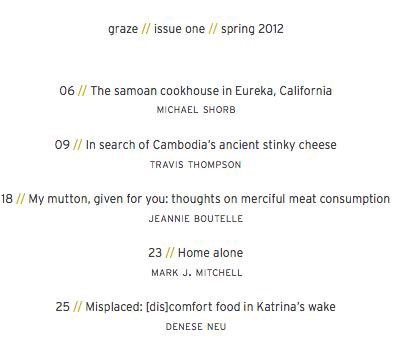
The brand new Graze magazine, based out of Chicago and so far entirely supported by food events, has just published issue number one. You’ll never take my subscription to Gastronomica but you definitely had me at “In search of Cambodia’s ancient stinky cheese”! Only $10 for the first issue!
Balsamic Vinegar Is So Lame These Days
“When you saw balsamic used at restaurants like Applebee’s, it was a sign that it was time to move on. For general consumption, balsamic is way overused. But that’s what keeps us moving forward in food. We find new things, we experiment, and at some point it’s time to try something different.”
— Chef Jeffrey Buben discusses how balsamic lost its cool. There is a suggestion that we return to the simple acidity of red wine vinegar, with its hip, throwback qualities. Even better, it is available in artisanal varieties. [Via]
My Bloody Valentine, Remastered
I am not sure how well you will be able to tell the difference over your computer, but if you would like to hear not one but two remastered versions of the My Bloody Valentine classic Loveless, here’s the place to go. Bandleader Kevin Shields claims that new material is forthcoming, but, uh, don’t hold your breath.
Raekwon, "A Pinebox Story"
Raekwon’s new video might have been filmed in the basement of one of the abandoned buildings where Chris and Snoop would take people who wound up on the wrong side of Marlo on The Wire. That is a place you really don’t want to be. The song describes a similar scenario. And it’s graphic and horrible. But with its gorgeous beat (constructed by North Carolinian producer 9th Wonder out of an old soul song that I wish I knew but don’t) and Raekwon’s tantalizing rhymes, it’s wonderful, too.
